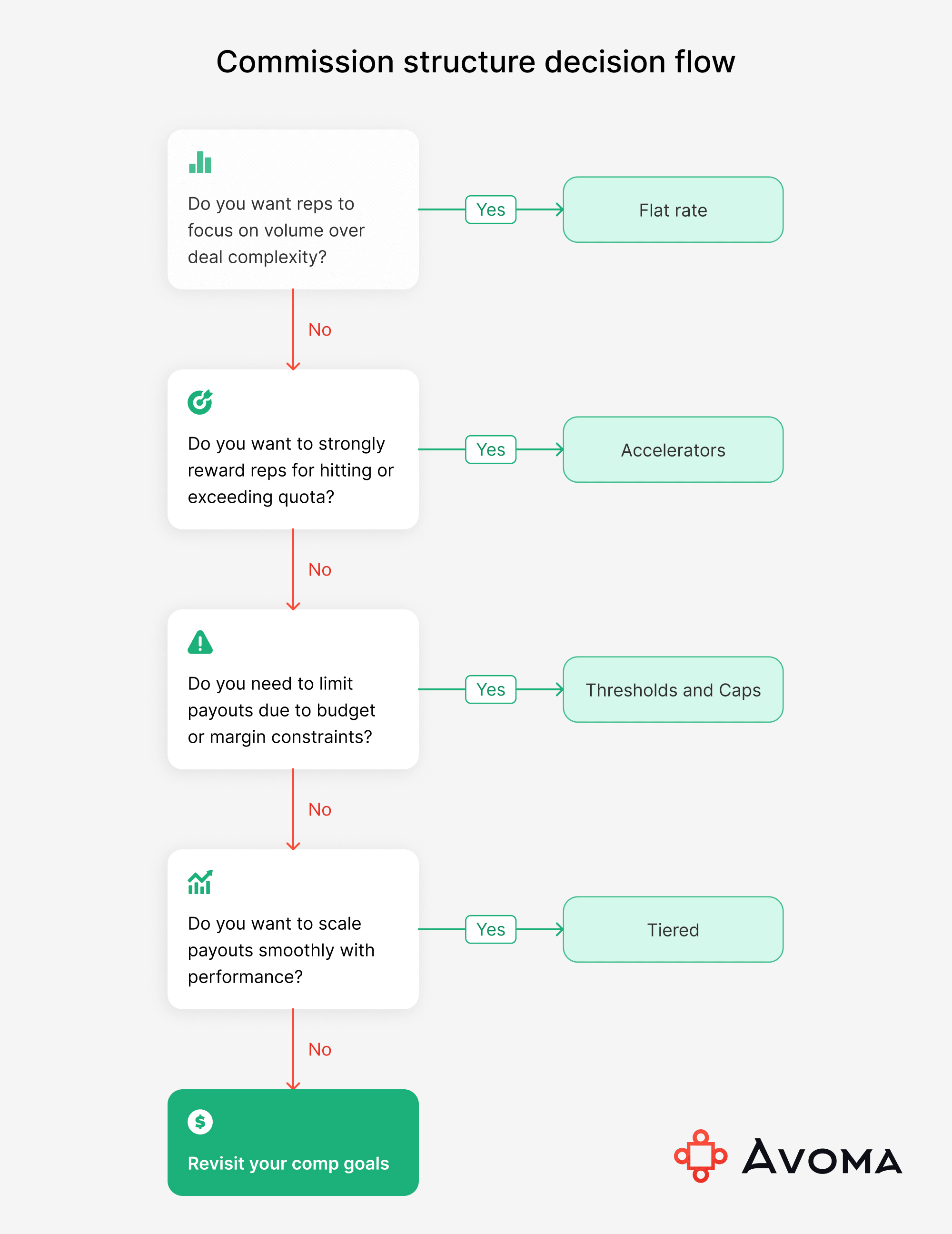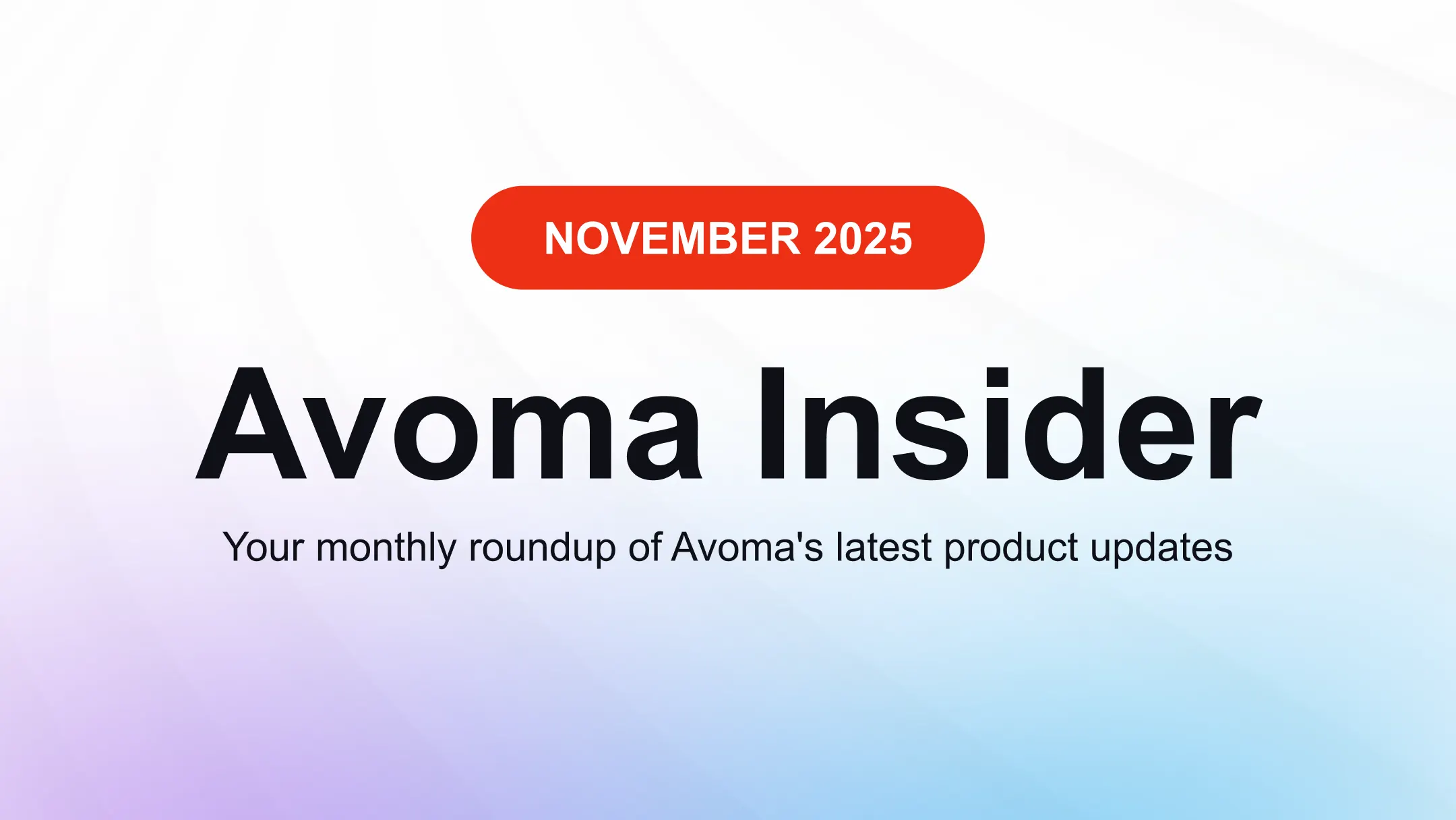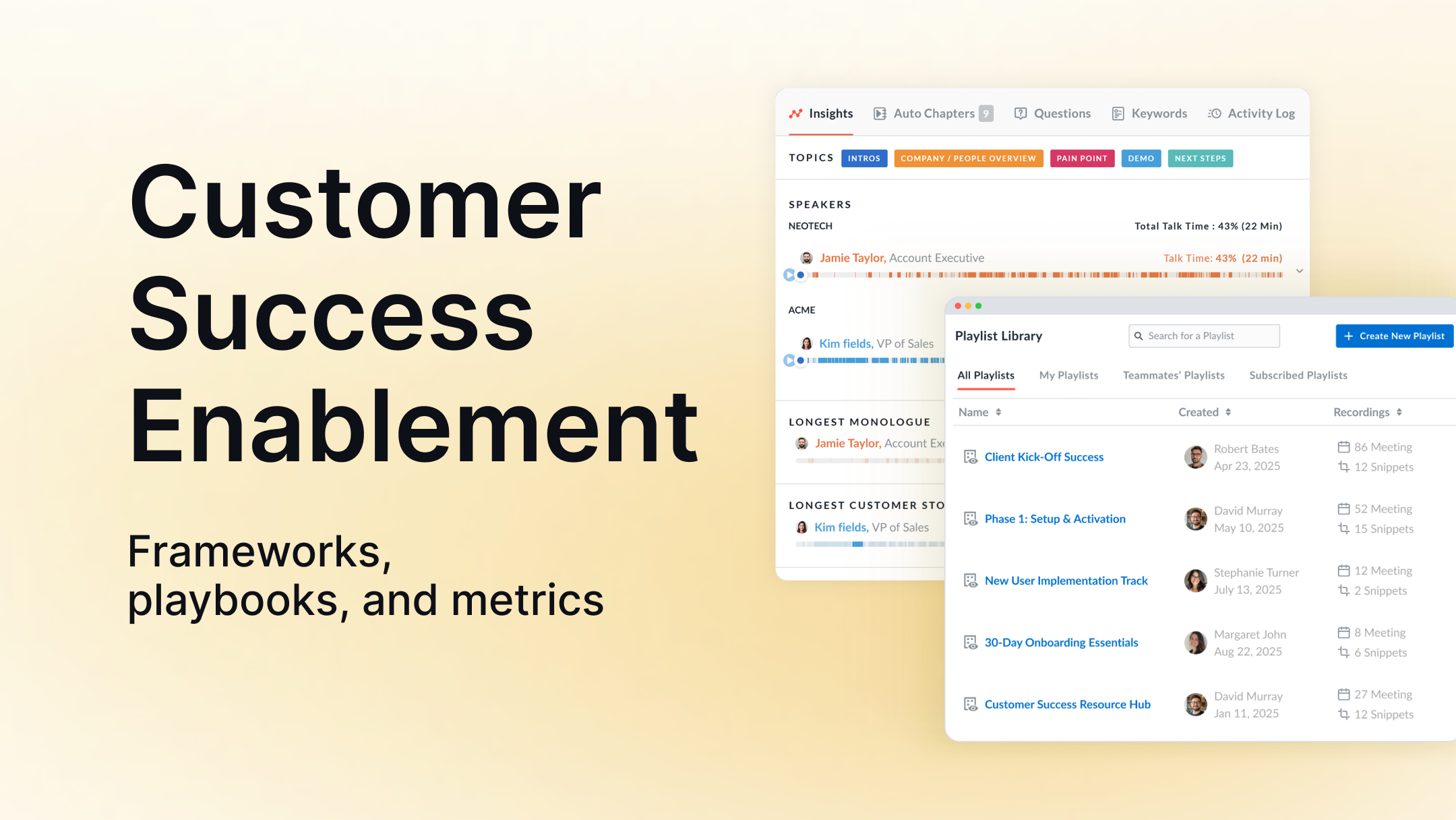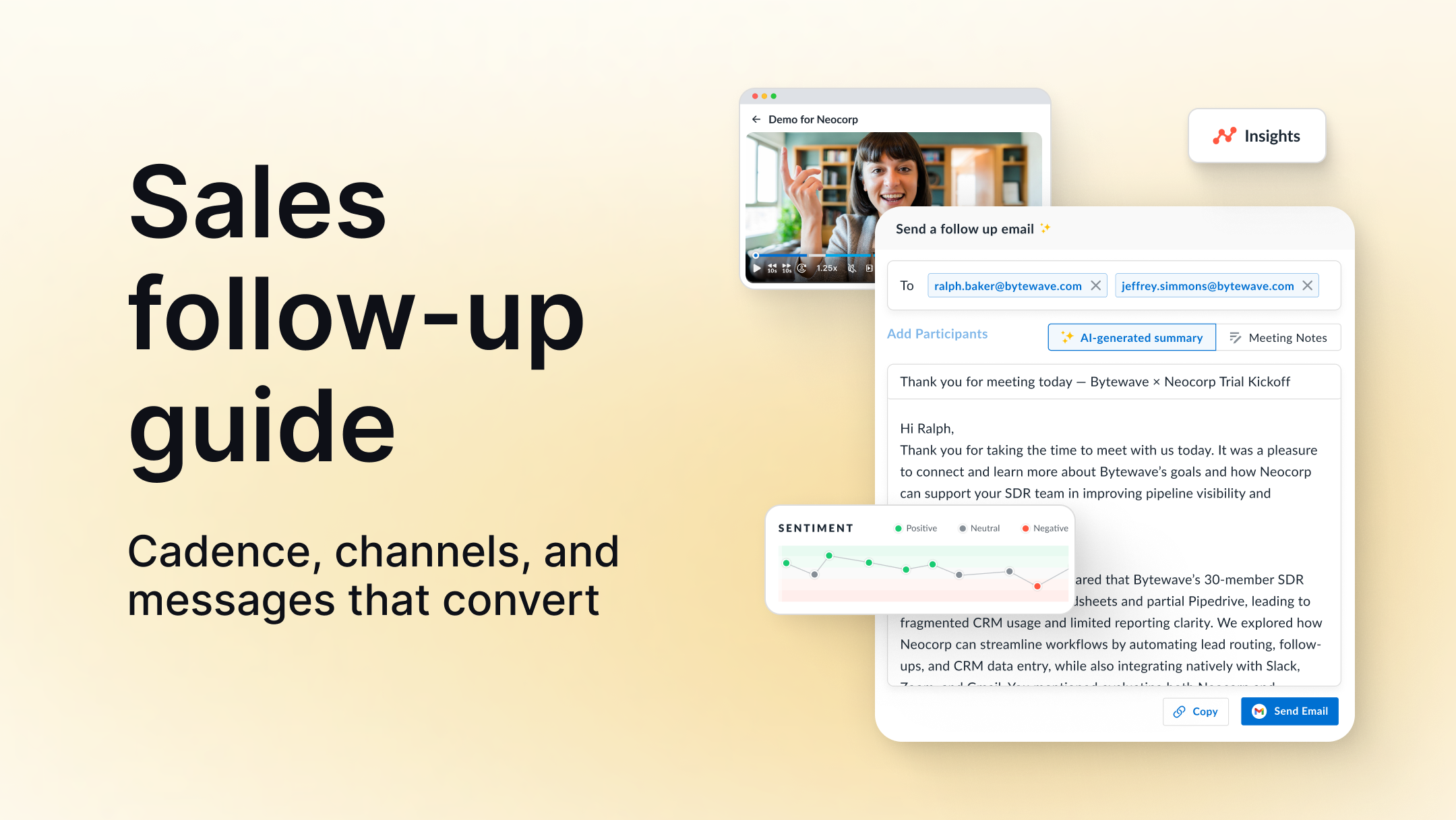Sales compensation: How to design, manage, and optimize pay for performance
Table of Contents:

Sales compensation is one of the most powerful and misunderstood tools in revenue strategy.
Done right, it gives sellers a clear path to earning, aligns effort with results, and drives exactly the kind of growth your business needs. But when compensation plans are too complex, misaligned, or poorly communicated, they create friction, obscure performance, and erode trust across the board.
91% of companies expect to redesign their comp plans, aiming to better align pay with performance and strategy. But most aren't starting from strength, most say their current plans are too complex or ineffective.
That’s why we wrote this guide.
Whether you’re redesigning your compensation plan, pressure-testing fairness, or trying to make sense of OTE, this guide provides the framework, steps, and even an interactive AI prompt to build a plan that actually works.
TL;DR: Key takeaways
- Most comp plans are broken. Nearly 70% of companies admit their current sales compensation plans are too complex or ineffective. (WorldatWork, 2024)
- Done right, comp drives behavior. A good plan doesn’t just reward results — it guides the actions that lead to them.
- This guide gives you two paths: a high-level framework to understand what makes a great plan, and a step-by-step builder to create one.
- You’ll learn how to:
- Define roles and pay mix
- Choose metrics that matter
- Design commissions and accelerators
- Pressure-test your plan with real data
- Communicate and adapt it as your business grows
- Includes a ready-to-use AI prompt for building your comp plan live inside ChatGPT, Claude, or Perplexity.
Let’s start with the basics.
What is sales compensation?
Sales compensation is the total pay structure used to motivate and reward sales representatives for driving sales revenue. It typically includes a mix of base salary, variable sales commission, performance bonuses, and sales incentives tied to sales targets.
At its core, sales compensation is about linking earnings to outcomes. It gives sales teams a reason to close the right deals — and gives leadership a lever to shape behavior at scale.
Here’s a breakdown of the most common sales compensation models:
Sales compensation plans vary widely depending on sales roles, industry, and growth stage. But they all serve the same goal: drive predictable sales performance by rewarding the behaviors that matter most.
Why is sales compensation hard to get right?
Sales compensation is hard to get right because it touches sales productivity, motivation, fairness, and finance all at once. A small misstep in compensation plan design or communication can lead to misaligned behavior, missed goals, or even customer churn.
Let’s break down the common pain points:
- Misaligned incentives: Reps may be paid for the wrong activities (like volume over quality).
- Complex calculations: If commission tracking is hard to understand, trust erodes fast.
- Lack of visibility: Sales leaders and finance often struggle to track sales performance in real time.
- Fairness concerns: When pay feels inconsistent, reps’ morale drops.
Who feels the pain?
This isn’t just a sales leader’s problem. Comp friction shows up across the org:
- CEOs worry about scaling revenue without losing margin control.
- Sales Ops gets buried in shadow spreadsheets and manual audits.
- HR teams face pressure to balance pay equity and performance.
- Reps chase unclear targets, mistrust payout math, or sandbag deals.
Designing a fair, motivating, and scalable comp plan means threading all of that. That’s why most teams need a repeatable framework, not just a spreadsheet.
What makes a great sales compensation plan?
A great sales compensation plan is simple, aligned with company goals, and built to reward the right behaviors. The best ones are clean, focused, and built to scale.
The most effective compensation plans share a few core principles:
- Align with business goals
Your plan should support the outcomes that matter most, whether that’s new logo acquisition, upsell, margin growth, or customer retention. Sales activity should mirror business priorities. - Keep it simple and transparent
Reps shouldn’t need a finance degree to understand their payout. Clarity builds trust, and trust drives sales performance. In fact, 97% of sales leaders say unclear comp plans hurt team morale and results (Quotapath, 2023). - Reward the right behaviors
Make sure you’re compensating not just for closed sales revenue, but also for deal quality, pipeline hygiene, or contract terms, depending on role and stage. - Review and adapt regularly
Markets shift, product priorities evolve, and sales motions change faster than most comp plans are built to handle. That’s why high-performing teams revisit their commission structure every 6 to 12 months.
These are practical checks to avoid misfires. If a rep can’t explain how they get paid in 30 seconds, something’s broken.
How to design a sales compensation plan that actually works
Designing a great comp plan is about alignment, clarity, and decisions that scale.
Whether you're starting from scratch or cleaning up legacy logic, you need a process that ties pay to performance, drives the right behaviors, and builds trust across the board.
Here’s a combined framework and builder, part strategic blueprint, part step-by-step workshop.
1. Define sales roles and responsibilities
Everything else depends on this.
Your comp plan should reflect what each role actually owns in your sales process.
List your roles and write 2–3 outcomes each one is responsible for:
- What roles are covered (e.g., AE, SDR, AM, CSM)?
- What are their core responsibilities?
- What part of the funnel do they own: top, mid, or post-sale?
2. Set performance objectives/ KPI
Incentives only work when tied to outcomes that matter.
Skip vanity metrics and focus on what drives revenue or retention. Metrics should be attributable and aligned to company goals.
Choose 1–2 metrics per role. Make sure they’re measurable and tied to outcomes that matter. Example:
- AEs: ARR, new logos, deal size
- SDRs: qualified meetings, conversion to pipeline
- AMs/CSMs: net revenue retention, upsell, churn rate
3. Choose your pay mix
The base-to-variable ratio signals risk and focus.
Too much base? Reps coast. Too much variable? Morale drops if targets aren’t realistic.
Common benchmarks:
Fill this in for each role:
- Base salary: $____
- Variable comp: $____
- OTE: $____
- Mix: ___ / ___
4. Set realistic quotas and scaling logic
Quotas are the foundation of any comp plan, and where many teams get it wrong. Set achievable targets, aligned with territory potential, and built to grow over time.
Decisions to make:
- What’s the primary quota metric? (ARR, new logos, meetings, retention)
- Is it monthly, quarterly, or annual?
- How do you account for ramp periods or seasonality?
- What payout scaling logic will apply: linear, tiered, or milestone-based?
5. Design commission structure
When you’re choosing how reps actually earn their variable comp, use the structure that best reflects your goals and sales motion.
Quick breakdown:
- Flat-rate: same percentage for every deal (e.g., 10% on ARR)
- Tiered: rates increase as reps hit milestones (e.g., 5% up to quota, 8% beyond)
- Accelerators: higher commission for performance beyond quota (e.g., 2x after 120%)
- Thresholds: minimum performance required before any payout (e.g., no payout until 50% of quota)
- Caps: maximum commission payout (use only if necessary)
Write your commission rule in one sentence per role. If it takes more, it’s probably too complex.
Example:
- AE: 8% on ARR up to quota, 12% after quota, uncapped
- SDR: $150 per qualified meeting, plus $500 bonus if show rate exceeds 80%

6. What to model before you launch the plan
Use past rep performance data to test how your plan would have paid out over the last 3 to 6 months. This helps you spot red flags before rollout.
Run these checks:
- If a rep hits 80% of their quota, how much would they earn? Does that payout feel fair for someone slightly below target?
- If a rep exceeds quota by 20%, how much extra would they make? Are accelerators working as intended?
- How do payouts compare across top performers, average reps, and low performers? Are high earners truly earning more, or is the spread too narrow?
- Is total payout volume sustainable for your finance team and budget models? Does it fit within your compensation budget at scale?
Use CRM data to simulate payouts across different performance tiers.
7. Communicate and launch clearly
Even the best plan fails if reps don’t understand it.
Comp plans must be easy to explain, hard to misinterpret, and backed by training.
Best practices:
- Create a one-page explainer for each role
- Run a live Q&A session
- Enable frontline managers to reinforce understanding
- Use tools like Spiff, CaptivateIQ, or Avoma to automate tracking and visibility
Build your rollout checklist. What materials, meetings, and tools will support adoption?
8. Monitor, analyze, and adapt
Your first version isn’t final. It’s a baseline.
Markets shift. Product priorities evolve. Sales motions change. That’s why high-performing teams revisit their comp plans every 6 to 12 months — not because they’re broken, but because alignment requires upkeep.
Decisions to make:
- Who owns the review process: Sales Ops, RevOps, HR?
- What signals should trigger adjustments?
- What cadence will you use to revisit the plan?
Set your first review date. Add three questions to evaluate:
- Is the plan driving the behaviors we want?
- Are payouts aligned with performance?
- Do reps understand and trust the structure?
Build your comp plan with ChatGPT, Claude, Perplexity, or wherever you work
Want to build your plan interactively inside your AI assistant? Use this prompt:
You are a sales compensation strategist.
Help me create a complete sales compensation plan from scratch — step by step.
Ask me one section at a time. At each step, guide me with short definitions, benchmarks, and examples. Then ask me to make a decision based on my company or team.
The steps to cover:
1. Define sales roles and responsibilities
2. Set performance objectives
3. Choose pay mix (base vs. variable)
4. Design commission structure
5. Model and simulate payouts
6. Communicate and roll out the plan
7. Set review and adjustment cadence
After each step:
- Summarize my inputs
- Show how it fits into the final comp plan
- Ask if I’m ready to move to the next step
Goal: By the end, I’ll have a draft comp plan I can present to Sales Leadership or RevOps.
What are sales compensation benchmarks and best practices?
Sales compensation benchmarks help you stay competitive, align with industry standards, and avoid overpaying or under-motivating your team. While every company’s needs vary, certain benchmarks and ratios are widely used as reference points.
Common benchmarks by role and industry
Source: Payscale, Xactly, and The Bridge Group SaaS AE Metrics Report
Best practices from high-performing sales orgs
- Tie compensation to pipeline stage, not just closed-won. This encourages earlier behavior (like qualification or expansion).
- Use 3–5 key metrics max. More than that, and reps lose focus.
- Benchmark annually, adjust as needed. Compensation plans that remain static tend to lose alignment fast.
Nearly 97% of revenue leaders say their comp plans need improvement — but most don’t revisit benchmarks frequently enough (Quotapath, 2023).
Use benchmarks as a guide, not a gospel. Your comp plan should reflect your unique goals, sales motion, and margins, not just what your competitors are doing.
What tools help manage sales compensation?
Sales compensation management tools automate commission tracking, reduce manual errors, and give visibility to sales reps and leadership. As your org scales, spreadsheets quickly become a bottleneck and a liability.
Key software categories
Sales compensation platforms
These tools calculate sales commissions, enforce rules, and provide dashboards for reps and managers. Sales leaders can track performance metrics, forecast payouts, and audit disputes.
Popular examples: QuotaPath, CaptivateIQ, Spiff, Xactly, Xoxoday Compass
Common features: Rule-based logic, sales quota tracking, plan versioning
CRM and analytics integrations
Pulling clean CRM data from your Sales Cloud (like Salesforce or HubSpot Sales Hub) is critical for accurate payouts. Many comp tools integrate natively with CRMs and BI platforms including HubSpot Sales Hub’s Breeze Prospecting Agent.
Finance and HR system connections
Syncing with payroll and HRIS platforms (like ADP, Intuit QuickBooks Payroll, or Patriot Software Payroll) ensures compliance and clean reporting — especially for variable-heavy sales roles.
When to invest in tooling
If you’re managing more than 10 reps, running multi-tiered sales compensation plans, or facing frequent disputes, it’s time to graduate from spreadsheets. Automating comp saves time, increases accuracy, and builds trust.
What mistakes should you avoid in sales compensation?
The biggest mistakes in sales compensation come from overcomplicating the plan, misaligning incentives, or failing to communicate clearly. These issues don’t just frustrate reps; they kill performance, trust, and forecasting accuracy.
Common pitfalls (and how to avoid them)
- Making the plan too complex
If reps can’t explain how they get paid, they won’t trust the plan, or act on it. Keep structures clear, rules minimal, and language plain. - Misaligned incentives
Incentivizing closed revenue when you actually care about deal quality, retention, or margin? You’ll get what you pay for, and not what you need. - Ignoring rep feedback
Comp plans often fail in the field, not on paper. Listen to your team’s questions and confusion, they’re signal, not noise. - Undercommunicating changes
Announcing a new plan without clear rollout, training, or visuals guarantees misunderstanding. Over-communicate during launch and after. - Failing to review and adapt
Comp plans should evolve. Business goals shift, roles mature, and what worked last year might miss the mark today. Yet only a handful of the orgs review plans more than once per year.
Quick checklist: Sanity check your compensation plan
Ask yourself:
- Can a new hire explain their plan in under 60 seconds?
- Are we rewarding behaviors that drive strategic outcomes?
- Do reps trust the math and visibility?
- Is the plan working across roles, not just at the top?
- Are we reviewing data and feedback quarterly?
If you answered “no” to more than one, your plan might be silently costing you pipeline, trust, and growth.
What are the future trends in sales compensation?
Sales compensation is evolving fast, driven by hybrid teams, AI, and new pay transparency laws. Tools like Spiff, CaptivateIQ, and Quotapath are helping companies adapt by making comp plans more dynamic, data-driven, and aligned with how selling actually works today.
Here’s what’s changing, and how the right tools support those shifts:
1. Team-based selling is reshaping incentives
Modern go-to-market motions rely on collaboration across SDRs, AEs, CS, and marketing. Comp plans are starting to reflect that with split commissions, shared KPIs, and team-based bonuses. Tools like QuotaPath and CaptivateIQ make it easier to manage multi-role payouts without messy spreadsheets.
2. AI is enabling real-time forecasting and risk visibility
Sales leaders want to see how deals are trending before the quarter ends. Platforms like Spiff and Avoma surface insights from rep activity and conversations to flag risks early and forecast accurately, so comp plans stay aligned with real performance.
Avoma's forecasting assistant helps managers predict sales performance and optimize compensation plans. Having a clear vision into forecast helps teams improve forecast accuracy, motivate reps, and manage earnings more efficiently.
Currently, 41% of companies are already using AI in their sales compensation processes, and another 38% plan to adopt it soon.
3. More comp plans are tied to pipeline activity
When top-of-funnel motion matters, so does rewarding it. SDRs and AEs are increasingly compensated on qualified meetings, not just revenue. Avoma’s Scheduler and Lead Router help automate bookings and qualification, letting teams double pipeline volume and ensure comp plans reflect rep contribution from day one.
4. Transparency and compliance are non-negotiable
New laws require clear pay ranges and comp logic. That’s pushing companies to adopt platforms with audit trails, visible payout rules, and CRM integrations. Tools like Xactly and Avoma help RevOps teams enforce transparency across roles and regions.
What’s the bottom line on sales compensation?
Sales compensation is one of the most powerful tools for driving revenue, but only if it’s designed with clarity, alignment, and adaptability in mind. The best plans don’t just reward results; they guide behavior and scale with the business.
By now, you’ve seen what a modern comp strategy needs:
- Clear roles, metrics, and payout logic
- Benchmarks and reviews to keep plans fresh
- Tech that automates admin and amplifies visibility
- Flexibility to evolve with how teams actually sell
And perhaps most important: trust. When reps understand how they’re paid and believe the plan is fair, performance follows.
If you’re reworking your comp plan now, you’re not alone. 91% of companies are updating their compensation strategy this year, and the ones doing it well are using real data, cross-functional alignment, and tools that bring it all together.
Next step? Start by reviewing your current plan against the checklist above, or better yet, talk with your GTM, Ops, and HR leads together.
Frequently Asked Questions
Sales compensation is the structured system that links a salesperson’s pay to their performance. It rewards results, reinforces desired behaviors, and supports overall business growth.
An effective sales compensation plan is built on clarity and alignment. It defines each role’s goals, sets measurable KPIs, and ties rewards directly to performance outcomes.
A sales compensation plan typically includes a base salary, variable commission, bonuses, accelerators, and thresholds—all working together to balance motivation and fairness.
The right pay mix depends on role and sales motion. SDRs often have a 70/30 mix, mid-market AEs a 50/50, and Sales Managers around 60/40 between base and variable pay.
Compensation plans should be reviewed every 6–12 months. Regular reviews help teams stay aligned with evolving targets, market conditions, and business strategy.
Modern platforms like Spiff, CaptivateIQ, Xactly, and Avoma automate commission tracking, improve visibility, and ensure accuracy across complex compensation structures.
AI brings intelligence and automation to compensation planning. It forecasts performance, detects risks, and optimizes payouts—helping teams stay data-driven and fair.






What's stopping you from turning every conversation into actionable insights?









